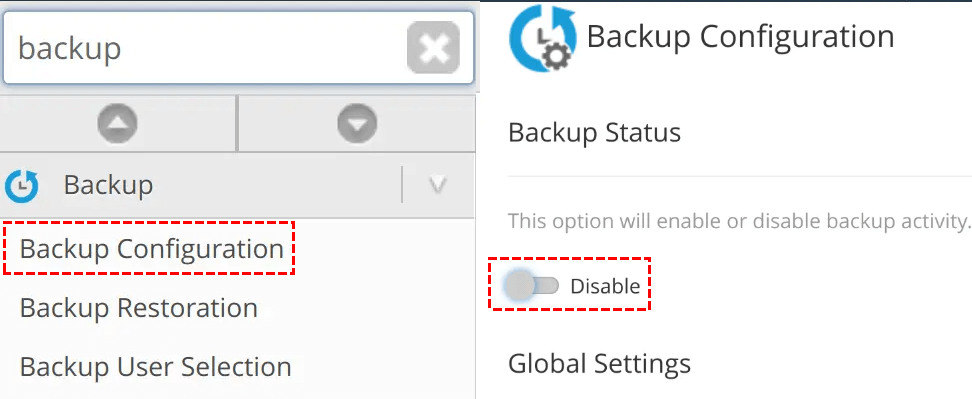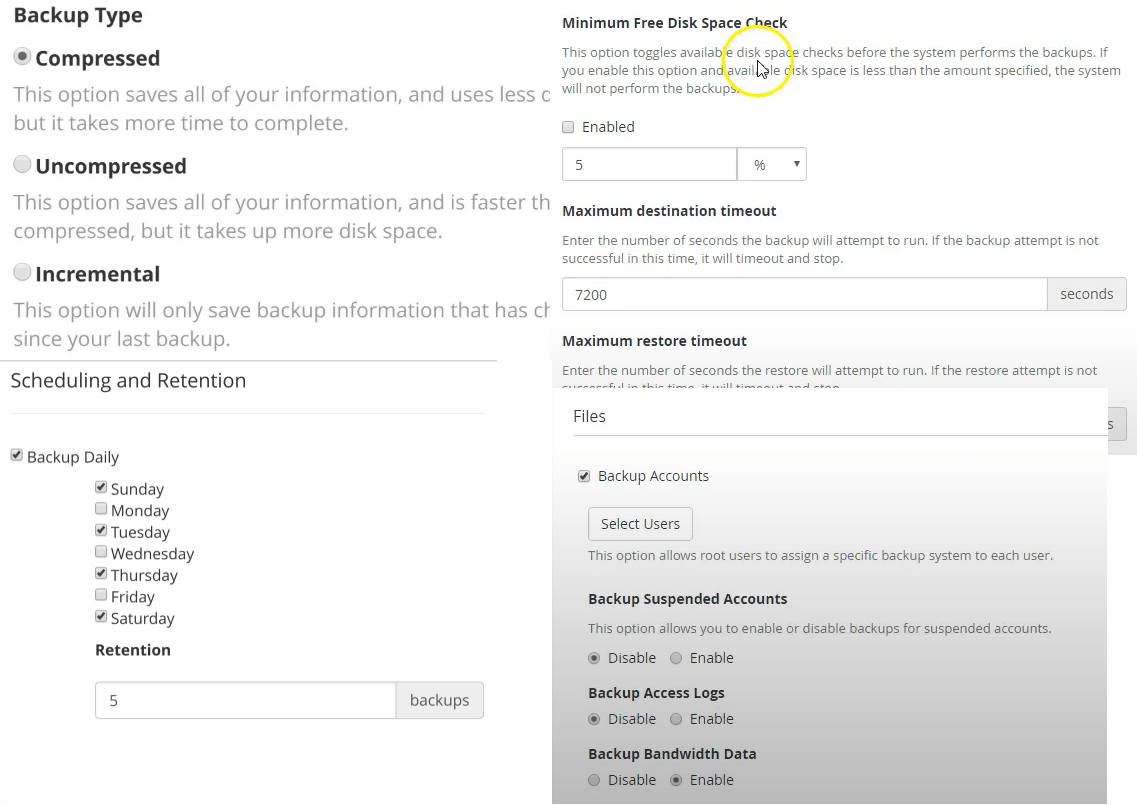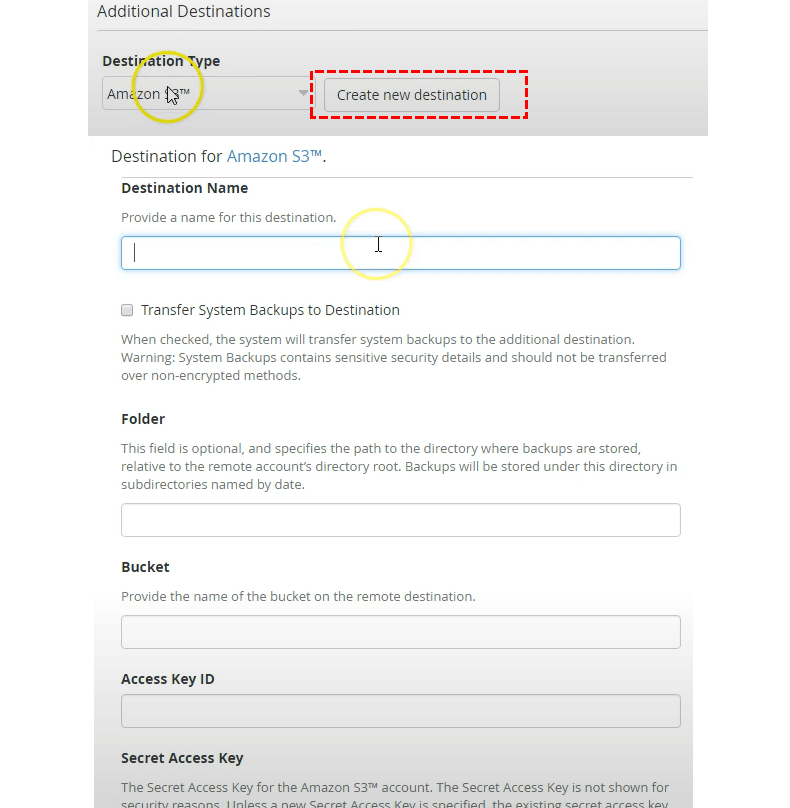Quick Search:
Introduction
Ever lost a website overnight and wished you had a time machine? Yeah, we’ve all been there—or feared it. That’s why backing up your website is more than just a smart idea—it’s a necessity. And if you're using cPanel, backing up to Amazon S3 is one of the most reliable solutions out there.
In this guide, we're going to break down exactly how to back up your cPanel to S3, step by step. Whether you're a tech whiz or just learning the ropes, you’ll find everything you need right here.
Why Backing Up cPanel is Crucial
So why are we talking about cPanel backup to S3? Simple. Amazon S3 (Simple Storage Service) is like Fort Knox for your website data—super reliable, scalable, and secure.
Accidents Happen
Let’s be honest—tech isn’t perfect. Server crashes, accidental file deletions, or even a simple misclick can wipe out your data in seconds. Having a backup can mean the difference between a minor hiccup and a full-blown catastrophe.
Protection Against Data Loss
Whether it's malware, a hack, or a failed plugin update, data loss can happen in so many ways. Backups give you a safety net so you’re never left scrambling.
Easy Disaster Recovery
If disaster strikes, having a recent backup makes recovery fast and painless. Just restore, and boom—you’re back in business.
What is Amazon S3?
Amazon S3 (Simple Storage Service) is like a virtual vault. It lets you store and retrieve any amount of data at any time.
Key Features of Amazon S3
- Scalable and reliable
- Redundant storage
- Highly secure
- Affordable pay-as-you-go pricing
Why Use S3 for cPanel Backups?
S3 is insanely durable (we’re talking 99.999999999% durability) and integrates smoothly with cPanel. Plus, it works well with automation tools, making your backup process seamless.
Let’s know more alternatives to Amazon S3:
[Full Guide] How to Configure cPanel Backup to S3
This process requires the use of WHM services and is mainly divided into the following 4 parts.
Part 1. Preparing for cPanel Backup to S3
Before jumping in, let’s get you prepped.
What You’ll Need
- Access to your cPanel/WHM
- An AWS account
- An S3 bucket
- Your S3 access and secret keys
Setting Up Your Amazon S3 Bucket
1. Log into your AWS Console.
2.Go to S3 > Create Bucket.
3. Give it a name and choose a region.
4. Disable "Block All Public Access" (since backups are private, this is fine).
5. Click Create.
Pro tip: Create a folder (prefix) within the bucket just for backups—it helps with organization.
Part 2. Configuring cPanel to Backup to S3
Here’s where the magic happens. Let’s get your cPanel/WHM to talk to S3.
Step 1: Enable Backup Configuration
1. Log into WHM.
2. Search for "Backup" and go to Backup Configuration.
3. Check Enable Backups.
Step 2: Set Backup Settings
- Choose compressed, uncompressed, or incremental backups.
- Set your backup retention period. Pick the days you want backups to run.
- Choose whether to back up accounts, system files, etc.
Step 3: Add Destination – Amazon S3
1. Go to Additional Destinations.
2. Click Create New Destination.
3. Select Amazon S3.
4. Add your S3 Bucket name, Access Key, and Secret Key.
5. Set a directory path (like /backups).
Step 4: Validate and Save
Click on "Save and Validate Destination". If everything’s good, you’ll see a green checkmark.
Part 3. Automating cPanel Backup to S3
Because manual backups? Ain’t nobody got time for that.
Using cPanel’s Built-in Scheduler
cPanel’s backup system lets you schedule daily, weekly, or monthly backups. Just set it once and forget about it.
Setting Up Cron Jobs
While WHM handles automation, some users prefer control via cron jobs.
Example cron:
0 2 * * * /scripts/pkgacct username /home && aws s3 cp /home/cpmove-username.tar.gz s3://your-bucket/backups/
Using Scripts or Plugins
You can also automate via third-party plugins or bash scripts using AWS CLI. This is ideal if you want detailed logging or additional processing like compression or encryption.
Part 4. Verifying Backup Success
Trust but verify, right?
Test Restore Process
Download a backup and try restoring it on a test server. Better to find out issues now than during a crisis.
Check File Integrity on S3
Log into your AWS console and make sure your files are:
- Present in the correct folder
- Not corrupted
- Properly timestamped
Common Issues and How to Fix Them
Even the smoothest setups can hit a snag.
Connection Errors
- Double-check S3 credentials.
- Make sure the bucket name is correct.
- Ensure your server’s time is synced (important for AWS auth).
Permission Denied Problems
- IAM user must have s3:PutObject and s3:ListBucket permissions.
- Test with AWS CLI to confirm access.
Backups Not Showing Up in S3
- Confirm the backup job completed.
- Check logs in /usr/local/cpanel/logs/backup/.
- Verify the destination path is correct.
Best Practices for cPanel Backup to S3
Use Versioning
Enable S3 versioning so if a backup goes wrong, you can restore a previous version.
Monitor Storage Costs
S3 charges based on usage. Set up storage lifecycle rules to auto-delete old backups.
Encrypt Your Backups
Turn on encryption (either client-side or server-side) to protect your data from prying eyes.
Final Thoughts
Backing up your cPanel to S3 isn’t just about peace of mind—it’s about being smart and proactive. With just a few steps, you can automate the entire process and sleep better knowing your website is protected. Whether you’re running a blog or a business site, don’t wait for disaster to strike. Set up your backup today!
Bonus Tip: Best Way to Manage Your Data in Amazon S3
If you're looking for the most efficient and user-friendly way to manage your data in Amazon S3, MultCloud is your go-to solution. This powerful cloud management platform lets you seamlessly connect, transfer, sync, and back up files between Amazon S3 and other popular cloud services—all in one centralized dashboard.
With MultCloud, you can bypass the hassle of logging into multiple cloud accounts or dealing with complex manual transfers. Whether you're a business handling large datasets or an individual seeking better cloud organization, MultCloud offers secure, scheduled, and high-speed file operations that save you time and effort.

- Cloud Transfer: Seamless cloud migration between different services and accounts, supporting scheduled migration.
- Team Transfer: Seamless cloud migration between different enterprise storage services, supporting batch migration of sub-accounts.
- Cloud Sync: Real-time sync of data between different services, supporting 10 sync modes.
- Cloud Backup: Important data backup between different services, supporting version management and data recovery.
- Image Saver: Free to save images or videos from social media or websites.
- Email Migration: Directly save emails or attachments from Gmail or Outlook to different cloud drives..
- Remote Upload: The content in URLs, torrent files or magnet links is automatically parsed to the cloud drive.
MultCloud Supports Clouds
-
Google Drive
-
Google Workspace
-
OneDrive
-
OneDrive for Business
-
SharePoint
-
Dropbox
-
Dropbox Business
-
MEGA
-
Google Photos
-
iCloud Photos
-
FTP
-
box
-
box for Business
-
pCloud
-
Baidu
-
Flickr
-
HiDrive
-
Yandex
-
NAS
-
WebDAV
-
MediaFire
-
iCloud Drive
-
WEB.DE
-
Evernote
-
Amazon S3
-
Wasabi
-
ownCloud
-
MySQL
-
Egnyte
-
Putio
-
ADrive
-
SugarSync
-
Backblaze
-
CloudMe
-
MyDrive
-
Cubby





